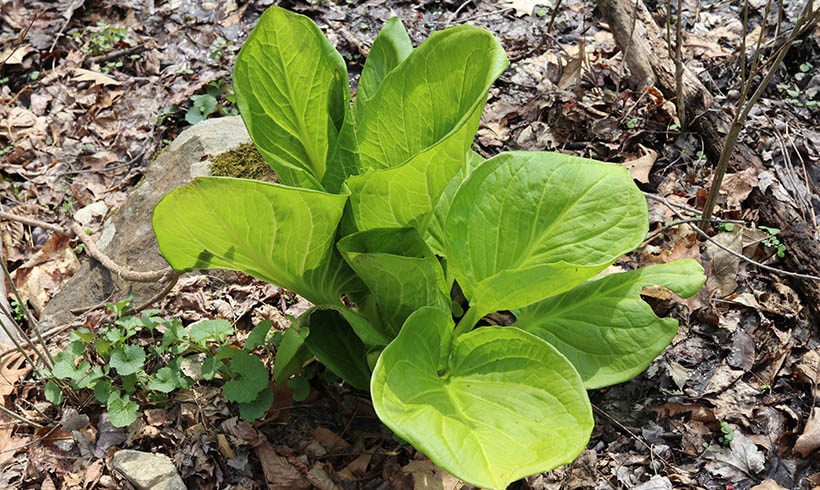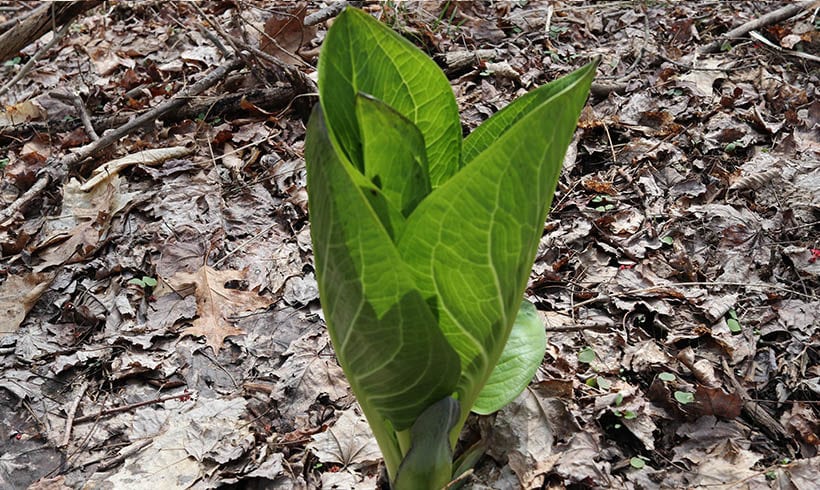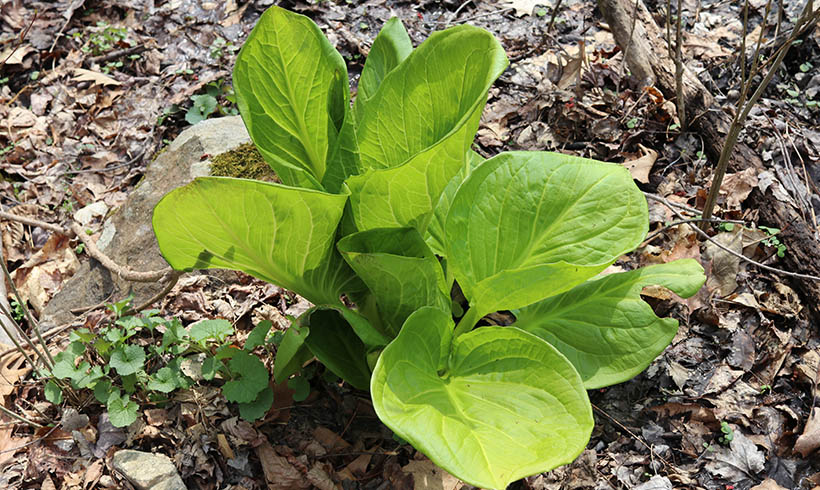Skunk Cabbage – The True Sign of Spring
While many may delight in the sight of daffodils pushing green tips up through the soil, as a first sign of spring, a walk on Teatown’s Hidden Valley Trail, reveals the true harbinger of spring – skunk cabbage.
In the wetland below the cliffs, observed through the remains of the snow and ice, the burgundy-rimmed horns, scattered about, signal the change of season. The curved mottled spathe provides a hood for the rounded spadix peeping from within, which bears indistinct petal-less flowers with both stamens and pistils. The odor wafting out may repel humans but the first insects to emerge from under the leaf litter find it alluring!
Skunk cabbage, Symplocarpus foetidus, is remarkable in its ability to generate its own heat, melting its way out of winter, to be one of the first plants to attract pollinators. One of the few thermogenic plants, the spadix absorbs oxygen to produce heat. In the early 1970s, biologist Robert Knutson found that for a period of about two weeks in late winter, skunk cabbage maintains a temperature of about 20 degrees higher than the surrounding air temperature.


The starches stored within the rootstock provide the fuel to generate the heat. That heat in turn helps spread the odor of rotting meat that attracts early spring insects to the plants. Gnats and small flies, carrion beetles, and even honeybees find their way to these amazing plants for its abundant pollen.
Now as the season unfolds, other flowers will join the panoply of blooms emerging. First, trout lily along the streams and wetland edges, then blood root with it bright white flowers, and soon trillium and jack-in-the-pulpit. The trees and shrubs add color to the vista — red maples, creamy white shadbush, and yellow spicebush buds catch the eye. All attract different pollinators. Walk slowly, take in the view, and maybe you will see a pollinator or two gathering pollen among the first woodland flowers of spring.

About the Author
Phyllis Bock
Director of Education
Phyllis has worked at Teatown since October 1991, when she began as a volunteer Nature Guide. Ms. Bock possesses a BA Biology from Queens College, CUNY. As Education Director, she takes to heart Teatown’s mission and encourages young and old alike to embrace all that nature has to offer. She can often be found hiking or kayaking somewhere in the Hudson Valley.



Leave a Reply